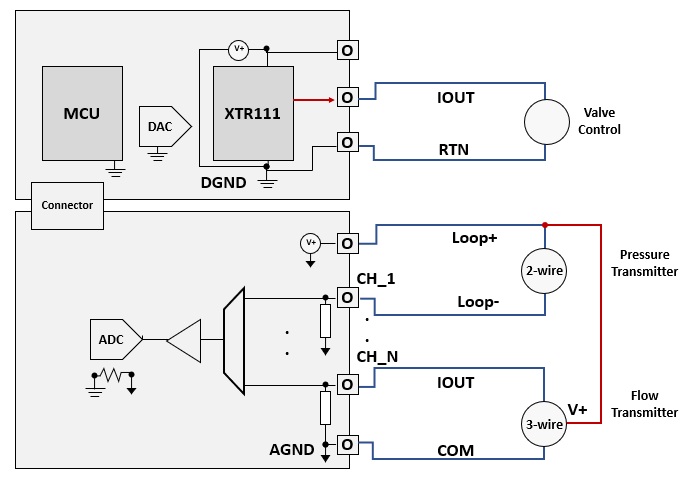Other Parts Discussed in Thread: XTR117, TIDA-01536
Hi Support Team,
I have browsed few threads on 4-20mA loop transmitter on e2e forum
from this post and this post , my understanding a 3-wire transmitter (XTR111) is used for cases where local supply is available
i.e. the ground of the DAC needs to be tied to the same ground as the supply,
For a 2-wire transmitter (XTR117) requires input isolation, i.e. DAC ground float on IRET and can not be tied to system ground.
Perhaps, I am missing something but the TIDA-01536 goes against that. I don't see how isolation is relevant here if the XTR111 is powered form local supply?
In our application we need a 4-20mA transmitter, we are providing local 24V supply so I was going with XTR111 but now I'm confused?!



